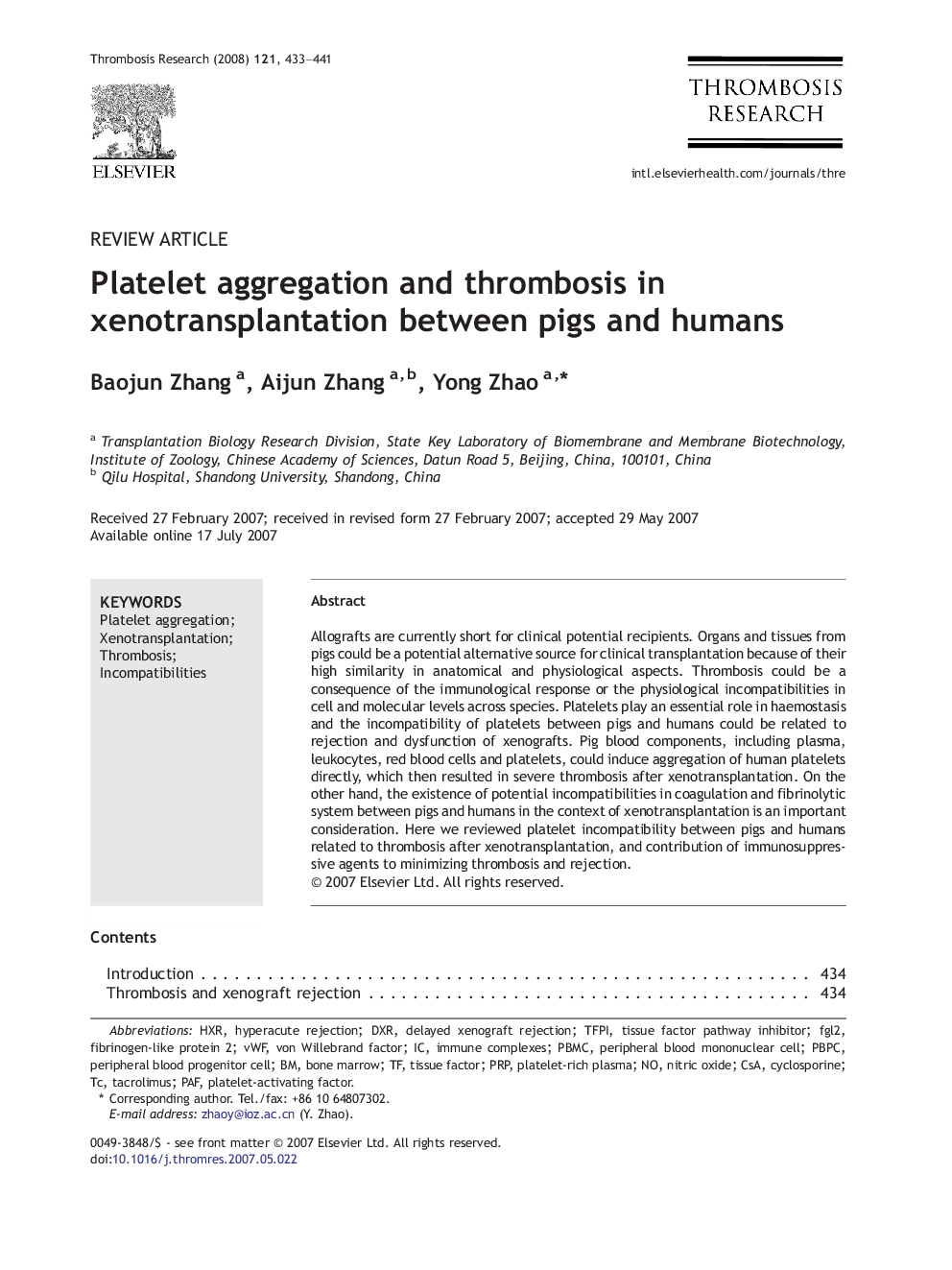| Article ID | Journal | Published Year | Pages | File Type |
|---|---|---|---|---|
| 3029667 | Thrombosis Research | 2008 | 9 Pages |
Abstract
Allografts are currently short for clinical potential recipients. Organs and tissues from pigs could be a potential alternative source for clinical transplantation because of their high similarity in anatomical and physiological aspects. Thrombosis could be a consequence of the immunological response or the physiological incompatibilities in cell and molecular levels across species. Platelets play an essential role in haemostasis and the incompatibility of platelets between pigs and humans could be related to rejection and dysfunction of xenografts. Pig blood components, including plasma, leukocytes, red blood cells and platelets, could induce aggregation of human platelets directly, which then resulted in severe thrombosis after xenotransplantation. On the other hand, the existence of potential incompatibilities in coagulation and fibrinolytic system between pigs and humans in the context of xenotransplantation is an important consideration. Here we reviewed platelet incompatibility between pigs and humans related to thrombosis after xenotransplantation, and contribution of immunosuppressive agents to minimizing thrombosis and rejection.
Keywords
PBMCdelayed xenograft rejectionIncompatibilitiesPBPCTFPIFGL2XenotransplantationPrPDXRvWFCSATacrolimusPlatelet aggregationThrombosishyperacute rejectionPeripheral blood mononuclear cellperipheral blood progenitor cellCyclosporineTissue factorVon Willebrand factorPlatelet-activating factorfibrinogen-like protein 2immune complexesbone marrowTissue factor pathway inhibitorNitric oxidePAFplatelet-rich plasma
Related Topics
Health Sciences
Medicine and Dentistry
Cardiology and Cardiovascular Medicine
Authors
Baojun Zhang, Aijun Zhang, Yong Zhao,
